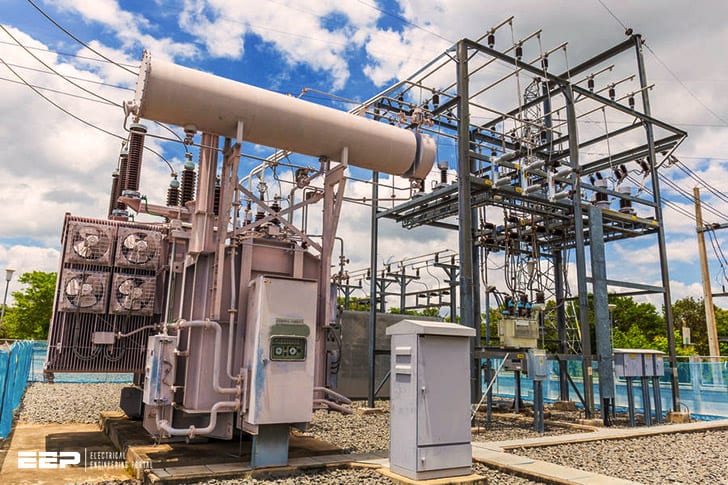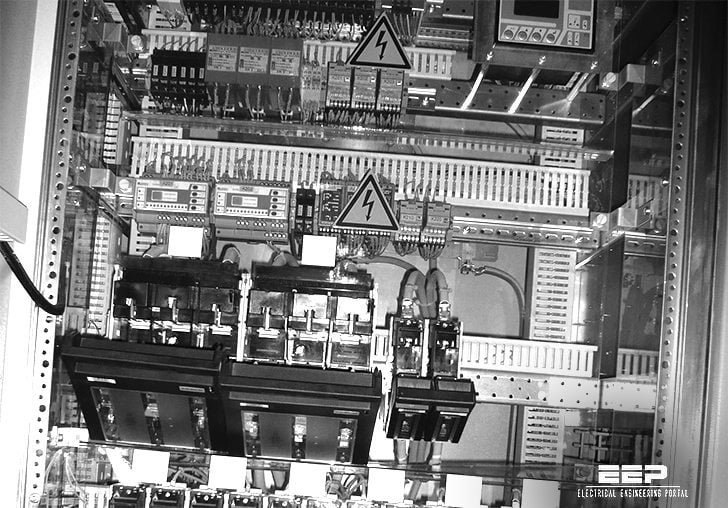A substation control panel is a device that helps to regulate and monitor the distribution of electricity within a substation. This panel typically contains several pieces of equipment, including meters, circuit breakers, and transformers. By monitoring the flow of electricity through these devices, the control panel can help to ensure that power is being distributed evenly and safely throughout the substation.
While the control panel at a substation may appear daunting, it is actually quite simple to understand. The control panel houses all of the equipment necessary to monitor and control the substation. This includes circuit breakers, transformers, and other electrical devices.
By understanding what each of these components does, you can easily control the substation.
Control & Relay Panel Function
A control and relay panel is an important part of any electrical system. It is used to control and monitor the flow of electricity in a system. The panel can be used to turn on and off circuits, as well as to monitor the current flowing through them.
Additionally, the panel can be used to protect against overloads by automatically shutting off circuits that are drawing too much current.
Substation Control Relay Panel Ppt
What is a substation control relay panel?
A substation control relay panel, also known as a station service unit (SSU), is a type of electrical switchgear used to distribute power within a substation. The SSU is typically composed of two parts: the control panel and the power panel.
The control panel houses the relays, breakers, and other devices used to control the flow of electricity within the substation, while the power panel contains the transformers and other equipment needed to generate or distribute electricity.
The main purpose of an SSU is to provide a safe and reliable means of controlling the flow of electricity within a substation. In addition to housing the relays and breakers needed to safely switch circuits on and off, an SSU may also contain devices such as metering equipment, protective relays, and communications systems.
By containing all of these components within one central location, an SSU can help improve the efficiency and safety of electrical distribution systems.
While most SSUs are housed indoors, some larger units may be installed outdoors in weather-resistant enclosures. Outdoor units are typically used in Substations where space is limited or when it is not possible to install an indoor unit due to site constraints.
What is Relay Panel
A relay panel is a device that controls the flow of electricity in a circuit. It consists of a series of switches that can be opened or closed to allow or block the flow of current. Relay panels are used in a variety of applications, including controlling motors, lights, and other electrical devices.
Substation Control Room Equipment
Substation control room equipment is used to monitor and control the substation equipment. It consists of various devices such as meters, relays, switchgear, etc. which are connected to the control panel. The operator uses this equipment to monitor the substation equipment and to take necessary actions in case of any abnormal condition.
Security Fence in Substation
A security fence is a physical barrier that is designed to deter and detect unauthorized entry into a substation. There are many different types of security fences, but the most common type is chain-link fencing. A chain-link fence consists of posts and rails that are connected by wire mesh.
The wire mesh can be made from various materials, such as steel or aluminum.
Security fences are an important part of any substation security plan. They can deter would-be intruders from entering the facility and can also provide early detection if someone does attempt to gain entry.
In some cases, security fences may also be equipped with alarm systems that will notify authorities if someone tries to breach the perimeter.
If you are considering installing a security fence at your substation, there are a few things to keep in mind. First, you need to determine what type of fence will best meet your needs.
There are many different types of security fences available on the market, so it’s important to do some research before making a purchase. Second, you need to consider the height of the fence. The taller the fence, the more difficult it will be for someone to scale it and enter the facility.
Finally, you need to take into account the climate in your area when selecting a material for your fence. Some materials are better suited for certain climates than others.
Installing a security fence is a big decision, but it’s one that can help protect your substation from unauthorized access.
Battery Room in Substation
A substation is a critical part of the electric grid, and the battery room is one of its most important components. The battery room houses lead-acid batteries that provide backup power to the substation in case of a grid outage. The batteries are connected to the substation’s electrical equipment via cables, and they are monitored by a control panel.
When the grid goes down, the batteries take over and keep the substation operational.
The battery room is typically located in a separate building from the rest of the substation, and it has its own ventilation system to keep the batteries cool. The room is also equipped with fire suppression equipment, as lead-acid batteries can release dangerous gases when they catch fire.
Lead-acid batteries are maintenance-intensive, and they need to be regularly checked for corrosion and other problems. Battery rooms are usually staffed by trained technicians who perform these checks and carry out any necessary repairs or replacements.

Credit: www.nfenergo.ru
What are the Three Main Parts of a Substation?
A substation is a key component in the electrical grid. Its main purpose is to take the high-voltage electricity from the power plant and transform it into lower voltages that can be used by homes and businesses. A substation consists of three main parts: a transformer, a switchgear, and a busbar system.
The transformer is the most important part of the substation. It steps down the voltage so that it can be used safely by households and businesses. The switchgear controls the flow of electricity through the substation.
It includes devices such as circuit breakers, fuses, and switches. The busbar system connects all of the equipment in the substation together.
What is the Difference between Control Panel And Relay Panel?
A control panel, also known as a switchgear, is an enclosure that houses various electrical components. These components include circuit breakers, fuses, and switches. A control panel may also contain other devices such as meters and relays.
A relay panel is a type of control panel that contains one or more relays. A relay is an electrically operated switch that can be used to turn on or off a circuit. Relay panels are often used in industrial and commercial applications where multiple circuits need to be controlled.
What are the Three Types of Control Panel?
There are three types of control panel: graphical user interface (GUI), command line interface (CLI), and web-based interface (WBI).
A GUI is a type of control panel that uses graphics and icons to represent tasks that can be performed. This type of control panel is typically found on personal computers.
A CLI is a type of control panel that uses text-based commands to perform tasks. This type of control panel is typically found on servers. A WBI is a type of control panel that provides a web-based interface for performing tasks.
This type of control panel is typically found on routers or other network devices.
What is the Full Meaning of Crp Panel?
A C-reactive protein test measures the level of C-reactive protein (CRP) in your blood. CRP is a substance produced by the liver in response to inflammation. Inflammation is a normal immune system response to injury or infection.
However, if you have certain conditions that cause chronic (long-term) inflammation, such as rheumatoid arthritis or lupus, your CRP levels may be elevated for a long time. A CRP test can be used to monitor these conditions and see how well they’re being controlled. It can also be used to check for inflammation in other parts of your body, such as your heart or brain.
33/11kv substation panel l substation control panel l substation control room Equipments
Conclusion
A substation control panel is a device that helps to regulate the flow of electricity in a substation. It is designed to automatically switch between different power sources and protect against overloads. The panel also monitors the voltage and current levels in the substation and can provide information about power outages.



